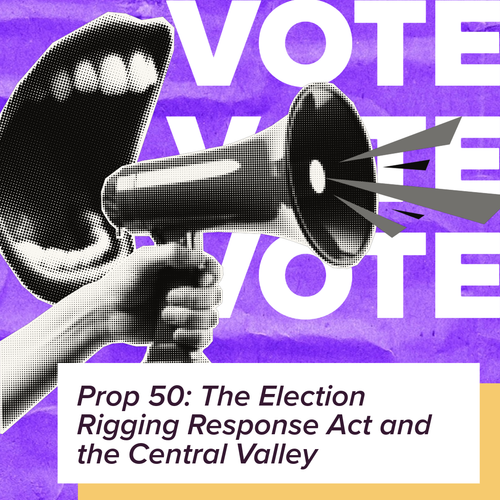TLDR
Prop 50, the “Election Rigging Response Act,” is the only item on California’s November 4 special election ballot. A yes vote temporarily gives the state legislature power to redraw congressional districts to favor Democrats; a no vote keeps the current independent map. The measure responds to recent Republican-led redistricting in Texas and other states. In the Central Valley, changes are subtle: some districts may shift slightly Democratic, affecting competitive seats like David Valadao’s District 22, while rural areas remain Republican. Prop 50 does not automatically change who represents you. Voters still choose their candidates. It could influence which voices are amplified and which issues get attention. In Fresno County, where Democrats and Republicans are nearly balanced and non-partisan voters are on the rise, every vote will matter.
Hops & Talk about Prop 50
On October 14, 2025 dozens of Fresnians gathered at Tioga Sequoia Beer Garden for a non-partisan informational session and discussion about Prop 50. The free event, part of an ongoing series called Hops and Talks, featured Fresno County Clerk James Kuss.
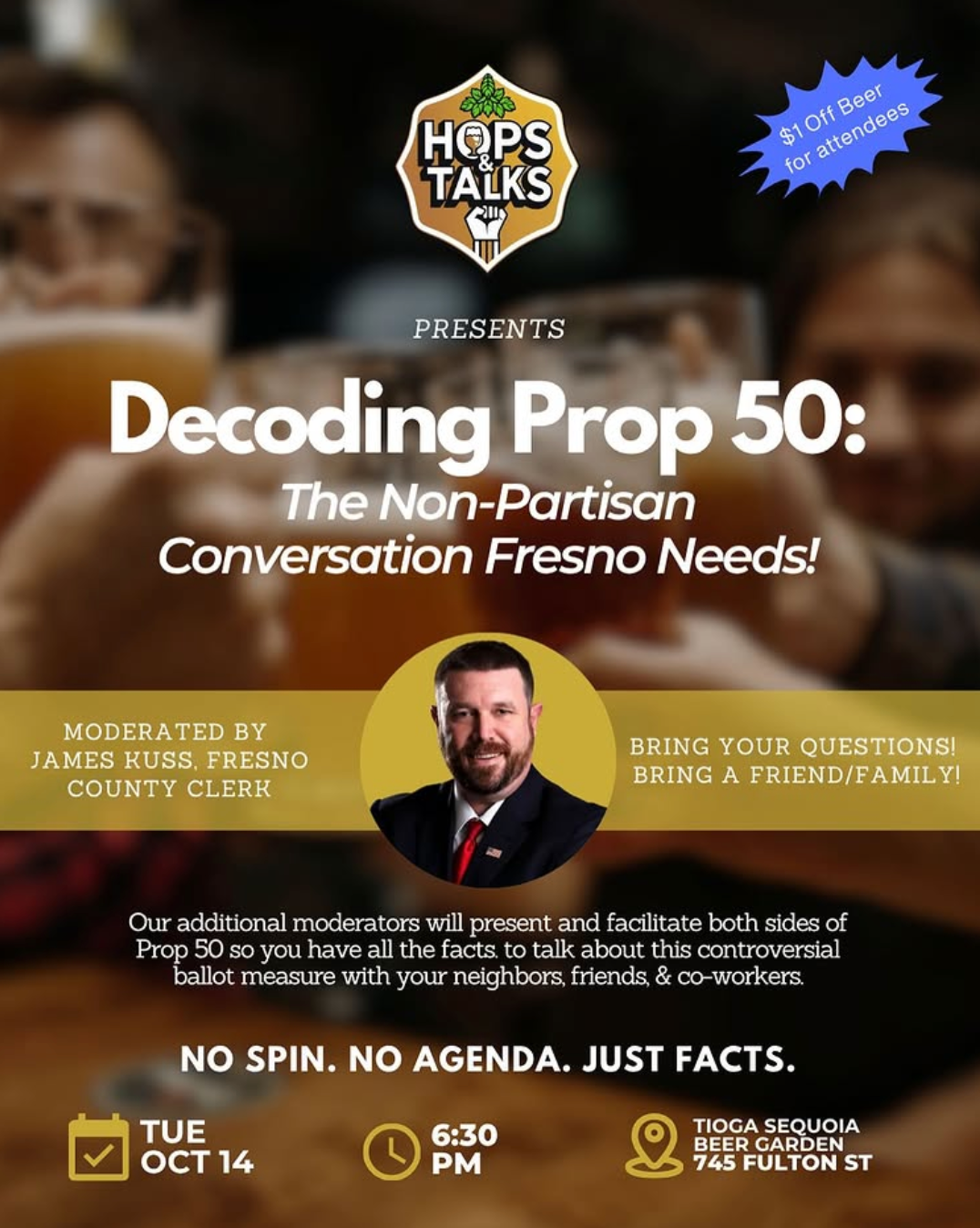
Others who supported facilitation of the event were Hops & Talks founder Sebastian Ardemagni, campaign and event coordinator Monte Forkas, California District 21 Candidate Lourin Hubbard, and Fresno Board of Education Trustee Area 1 Keshia Thomas.
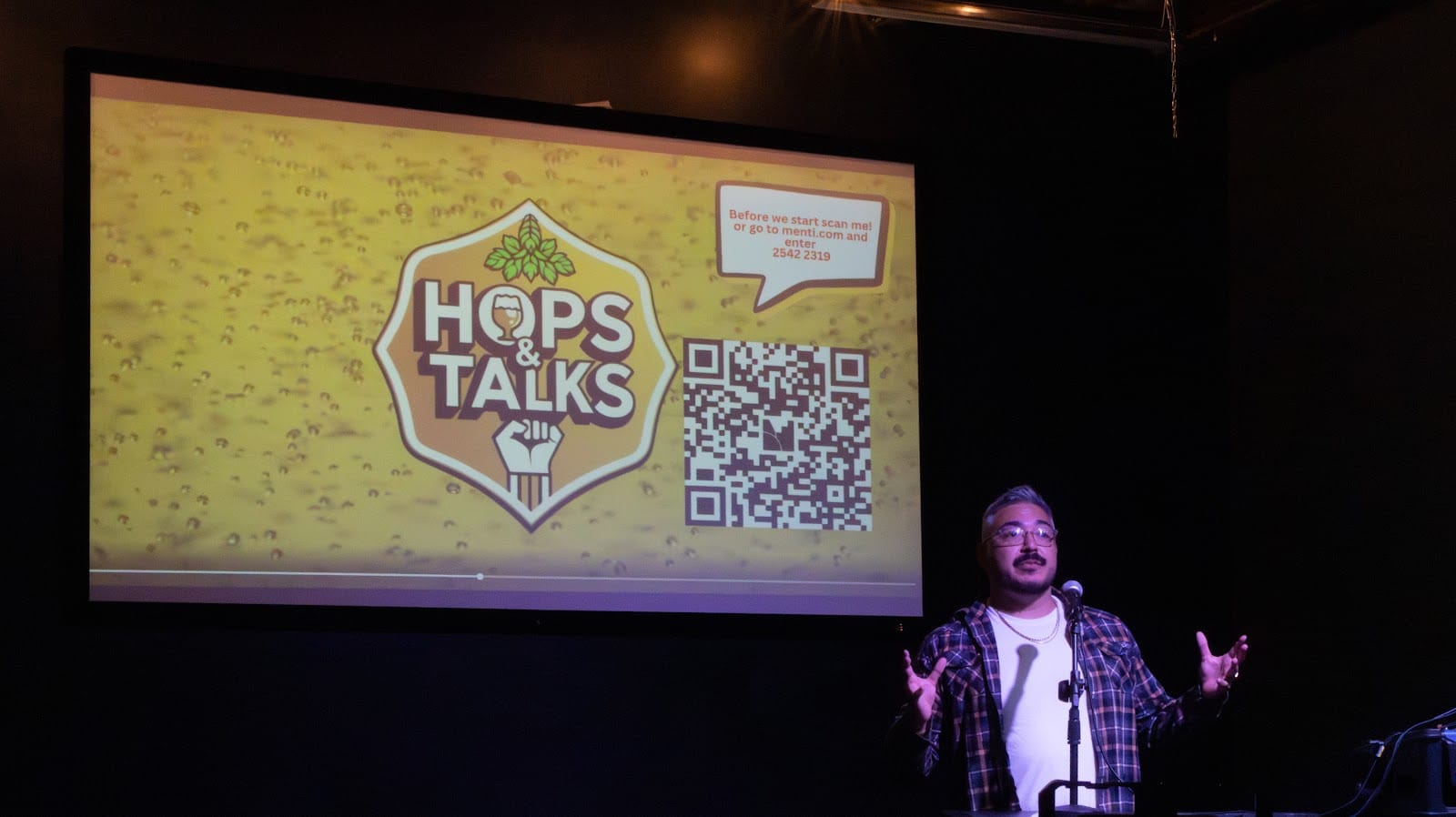



Clockwise from top left: Sebastian Ardemagni, Hops & Talks Founder; Lourin Hubbard California District 21 Candidate; Keshia Thomas, Fresno Board of Education Trustee Area 1; Fresno County Clerk James Kuss.
What is Prop 50?
Prop 50 is the single item on the November 4th special election ballot. A yes vote would give the California state legislature temporary power to redraw congressional district boundaries to favor the Democratic party. A no vote means districts will remain as they are.
Known as “The Election Rigging Response Act”, Prop 50 was introduced by Senate Democrats with support from Governor Gavin Newsom as a solution to the Texas government voting to approve a Republican-favored congressional district map. This has become a national trend as several states from both sides of the bipartisan field are considering or actively doing the same.
Typically, redistricting occurs once every ten years, following the release of new census data. Voluntary redistricting outside the regular census cycle has only happened twice before, according to the Pew Research Center.
Texas
Texas politicians voted to redistrict shortly after Trump urged Republican-led states to redraw districts to secure a Republican advantage ahead of the 2026 midterm elections.
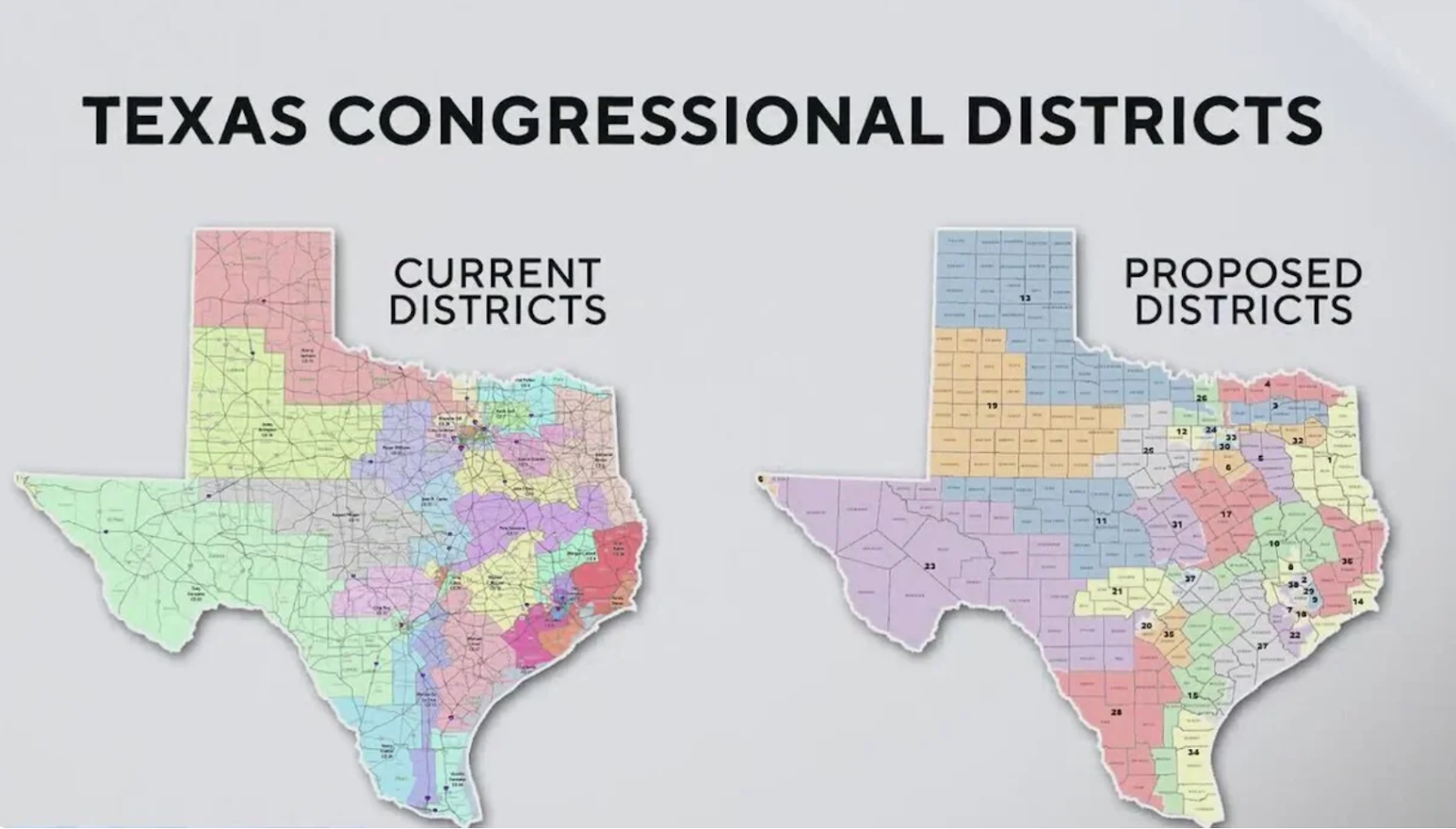
Texas’s new lines carve out an additional 5 seats for Republicans. Missouri and North Carolina have since approved similar Republican-favored maps.
California
In 2008 Californians voted in favor of Prop 11, or the Voter’s FIRST Act creating the California Citizens Redistricting Commission (CCRC) to take the responsibility of creating district boundaries out of the hands of politicians and into the hands of the people in an effort to avoid biased mapping.
“...cities such as Long Beach, San Jose and Fresno are divided into multiple oddly shaped districts to protect incumbent legislators,” reads Proposition 11.
The CCRC includes 14 members-5 Democrats, 5 Republicans and 4 independents or members of other parties.
Prop 50 temporarily amends article XXI of the California Constitution to allow the state legislature, not the CCRC, to draft the emergency redistricting map. The temporary map intentionally favors the Democrats to hopefully recover the 5 seats lost from the new Texas maps.
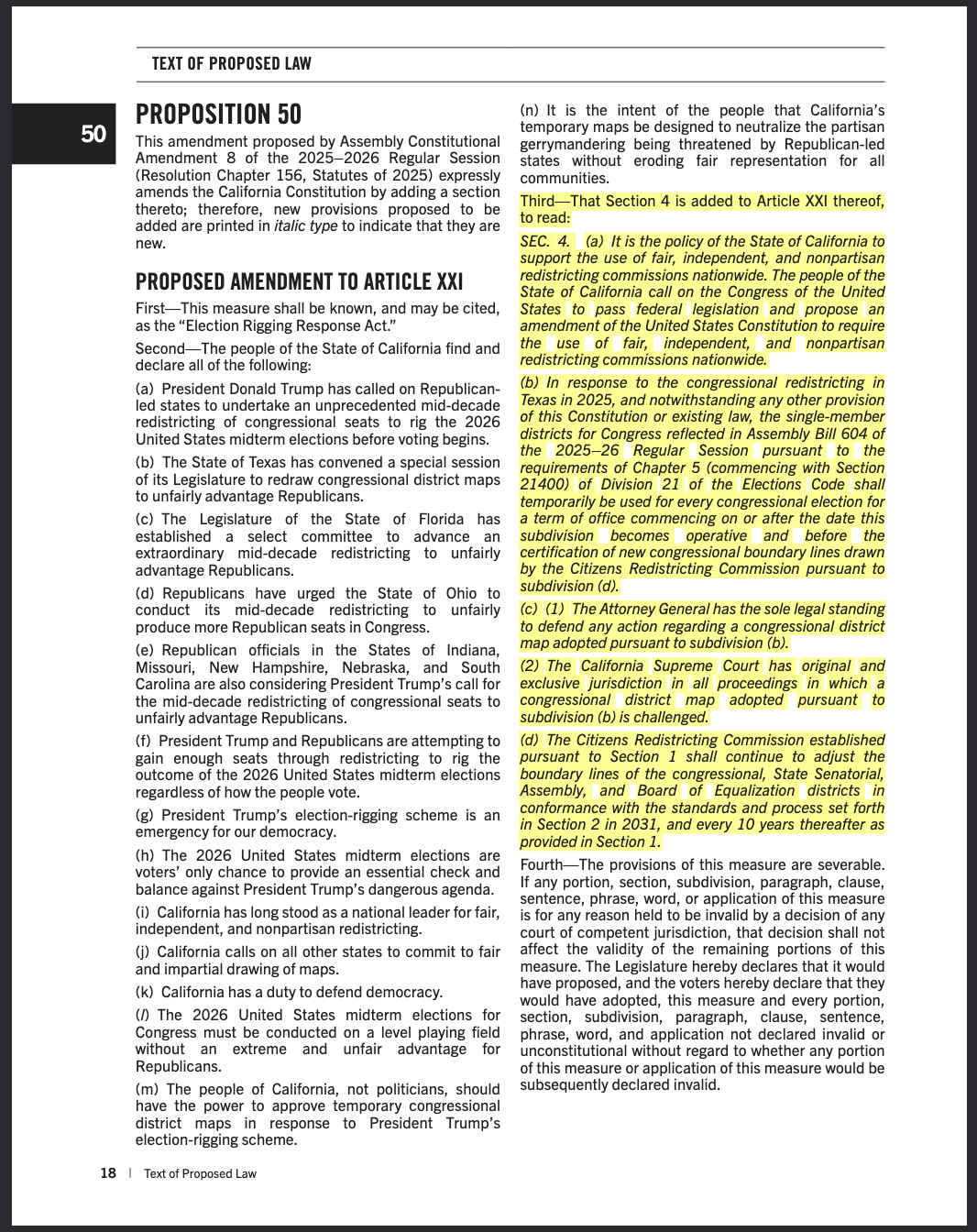
If approved, this legislature-drawn map would take effect for the 2026 midterm elections and remain in place until the next scheduled redistricting cycle following the 2030 census, unless overturned or repealed.
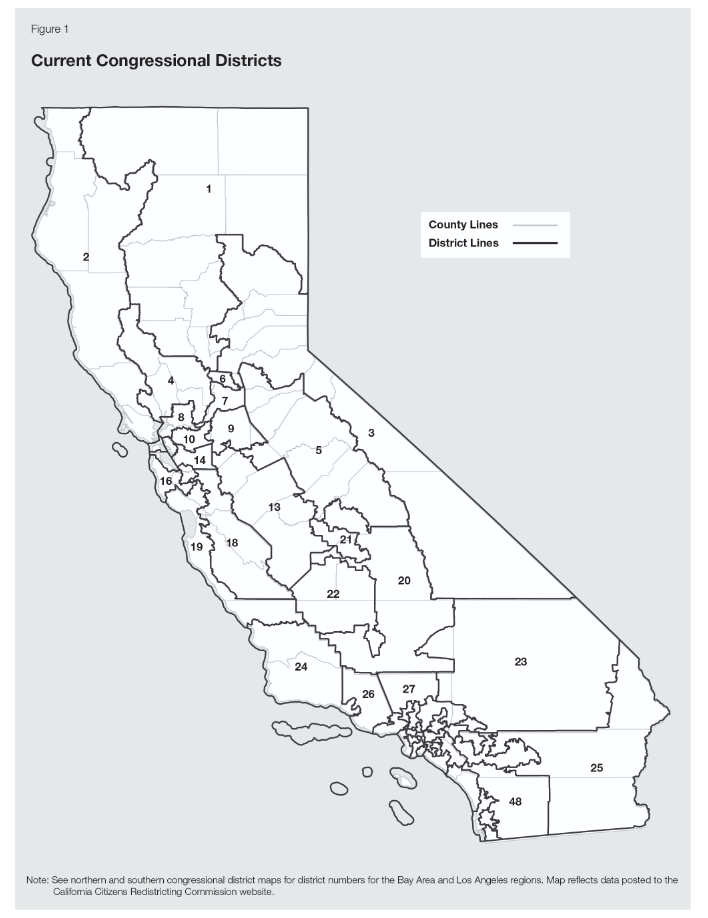
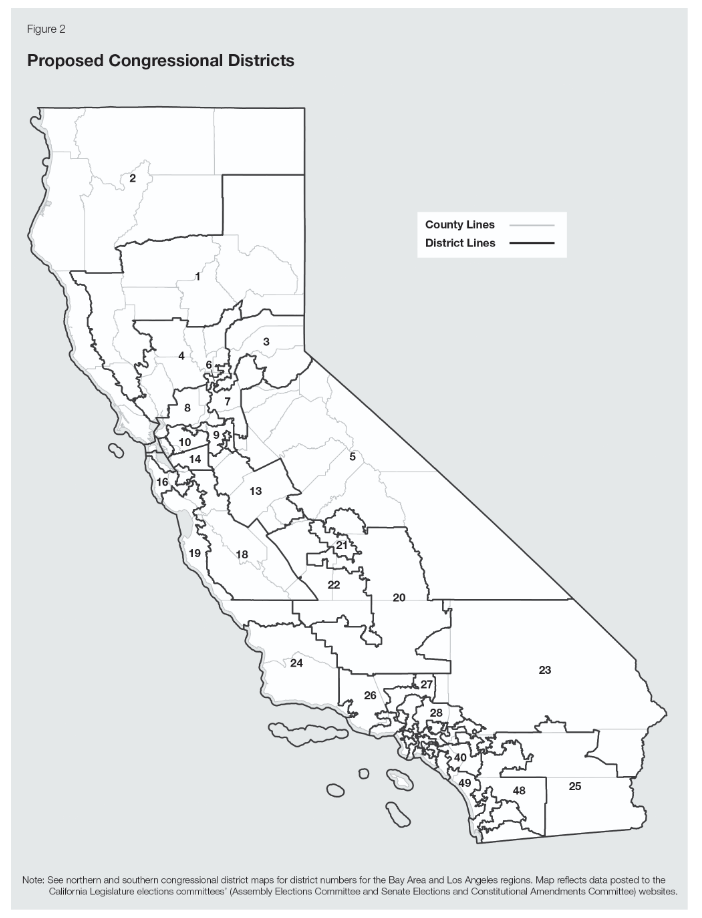
California current and proposed congressional districts.
Gerrymandering
Partisan favored boundary lines like those in Texas and the proposed map for California’s prop 50 are a type of gerrymandering.
The Encyclopedia Britannica defines gerrymandering in U.S. Politics as:
“The practice of drawing the boundaries of electoral districts in a way that gives one political party an advantage over its rivals (political or partisan gerrymandering) or that dilutes the voting power of members of racial or ethnic minority groups (racial gerrymandering).”
Gerrymandering is achieved by manipulating lines based on census data, voting history patterns, and geography, among other considerations.
As recently as 2019, the Supreme Court ruled that political gerrymandering is not a federal concern, while gerrymandering based on race is unconstitutional. The new Texas maps are being challenged in court by the Texas NAACP for racial discrimination. A decision is expected by November 15th.
Prop 50 and the Central Valley
Under the proposed temporary map, parts of western Fresno County and Kings County shift into more Democrat-leaning districts, while eastern and rural regions remain largely Republican.
“If there's any plan or strategy here, it's to minimize some of our more hyper conservative areas and elevate voices of people in left and progressive spaces,” Sebastian Ardemegani said in an interview during an intermission at the event.
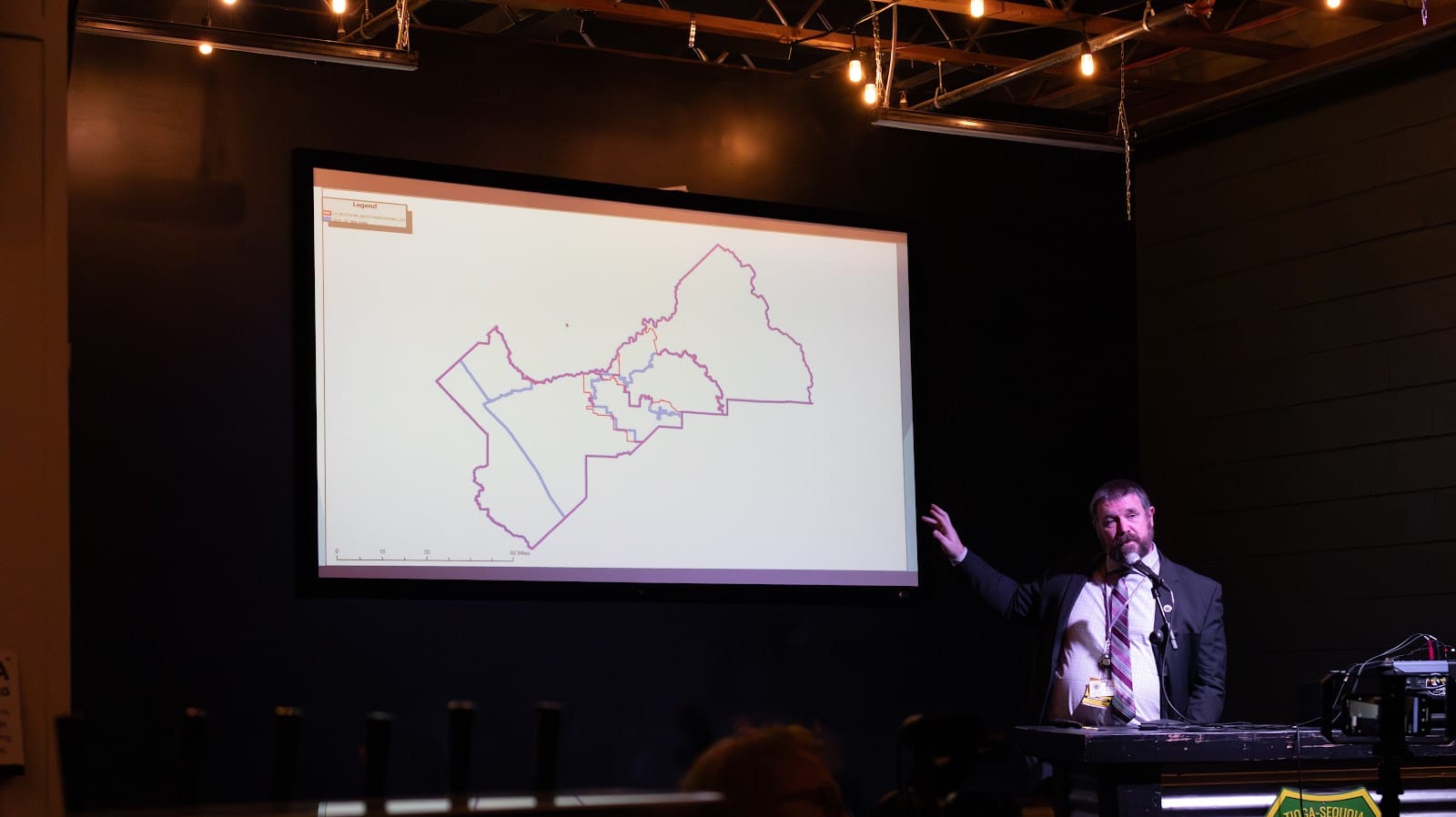
That means competitive seats like David Valadao’s district 22 may lean more Democratic. Smaller shifts in Clovis, Selma, and Reedley could influence which issues receive attention at the federal level, especially around agriculture, water access, and immigration.
Overall, Prop 50’s local impact is subtle but significant. It changes the possibility of who can win, not the certainty of who will.
Why Should You Care?
“Anytime we do redistricting, it’s changing who your potential representation is. You actually have a say in that redistricting. You don’t get that often,” County Clerk James Kuss said.
Whether you’re a student, farmer, small business owner, renter, or educator, redistricting decides whose voices are amplified in Washington.
“There is a plurality of democratic registration, so more Democrats registered than the Republicans, but the third largest group is non-partisan voters. They've been the fastest growing group over the last 10 years, and more people are leaving one party for that group based on not necessarily being happy with somebody who's been in charge for a while over those last 10 years,” explained Kuss.
This combination of no single party having a clear majority, a large and growing independent voter base, and varying results depending on election type creates the classic "purple" dynamic where either party could win depending on turnout and candidate quality.
Special elections, like the one on November 4th, tend to have a lower turnout and lean more red. As a “purple county”, even a few hundred votes could determine whether the Central Valley tips in one direction.
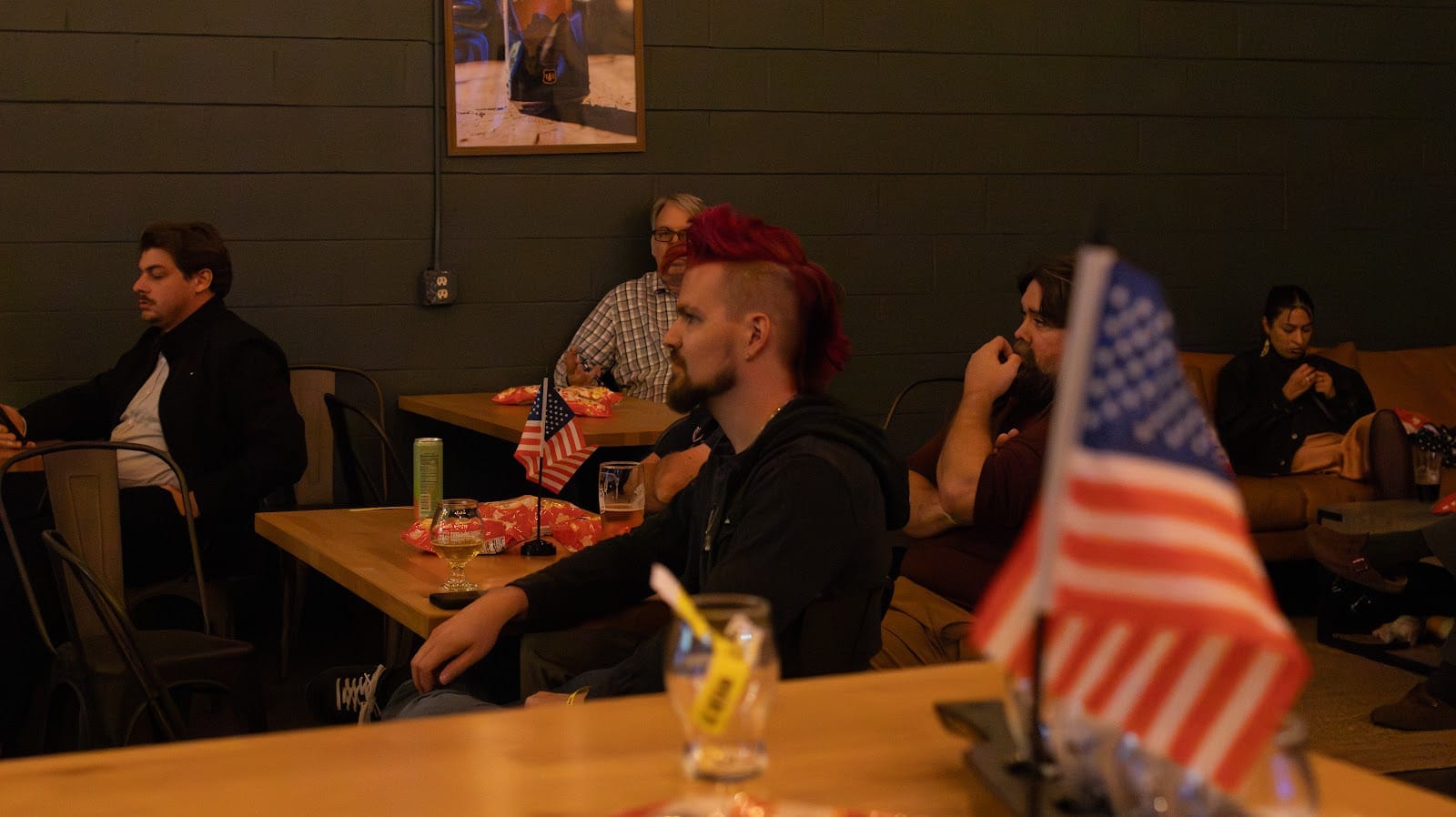

Attendees engaged in listening and discussion at Hops & Talks.
Recap & Final Notes
Prop 50 has stirred debate regardless of party affiliation, forcing Californians to consider how fair representation is defined, who should draw congressional lines and who shows up to vote.
Supporters of the proposition see it as a necessary counterbalance to Republican-led redistricting in Texas and other states. Critics argue it undermines the process voters created in 2008 with the Voters FIRST Act and the successive establishment of the CCRC.
While Prop 50 doesn’t automatically change who represents you, it may place you in a new district. This affects who you can vote for and the issues that get prioritized in future elections.
“I just wanted to emphasize that Prop 50 is creating the space for potentially more left-leaning representation… It doesn’t change who your representatives are. You still have to vote for the right person,” said Ardemagni.
In Fresno County, a “purple” region where Democrats and Republicans are nearly balanced and non-partisan voters are on the rise, the effects may not be as obvious. Some districts could become slightly more Democratic. Independent voters will continue to play an important role.
“This is going to be one of those ones where every vote is really going to matter,” said Kuss
“If you’re a left-leaning or liberal young person that’s interested in creating a stronger set of representatives that are left-leaning within California… then you should support Prop 50 because it’s a plan created frankly, by the left to strengthen and hopefully ensure that there are more progressive left-leaning candidates throughout California,” Ardemagni added.
When and Where Can I Vote?
Election Day: Tuesday, November 4, 2025 (With some locations open for early voting, see below.)
Polls Open: 7 a.m. – 8 p.m.
Mail-in Ballots: Must be postmarked by Election Day and received by November 11

Vote Centers: Open beginning October 26 at multiple Fresno County locations — including Fresno City College, Clovis Veterans Memorial District, and the Central Library downtown. Find a voting center near you.
Check Your Status & Find Locations: registertovote.ca.gov or the Fresno County Elections Office
For more information on Prop 50 see the official CA voter information guide.

